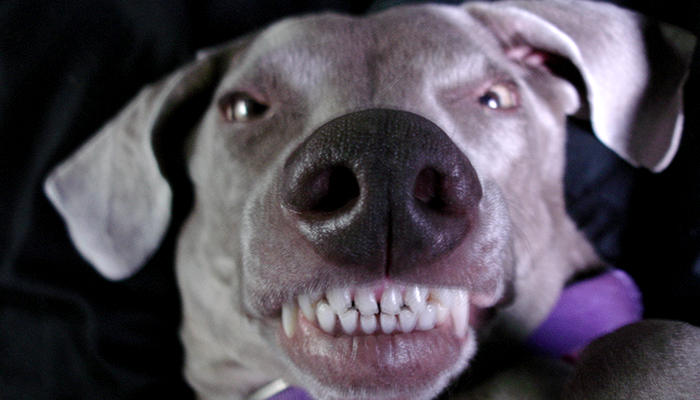The answer depends on a couple of things: if there is damage to the tooth root, if she is in pain, and your finances.
When the tooth breaks and you can see a brown dot in the center of the tooth it suggests that the root is exposed. Sometimes that can cause pain as a nerve lives in the root. Some dogs will be flinching and painful in the area around the broken tooth. In some cases, the nerve can die. After the nerve dies and some time passes the tooth may become discolored and loose, perhaps even fall out.
Do have a peek to see what the tooth actually looks like. What’s good is that there is usually a tooth on the other side to compare with. There are a lot of dogs out there who have chipped off tips of their teeth but the actual nerve root is not exposed. These dogs chew on rocks, or wires on cage doors, pretty aggressively and can chip a tooth. These cases of small chipped teeth are not health concerns.
Because your dog broke her canine tooth, how loose the tooth is helps determine what to do next. If she is in pain then your choices are to have the tooth removed, filled, like a doggie root canal, or have it capped. Removal of the canine tooth can be very difficult, especially when the remaining tooth is quite strong and healthy. The hard root of the tooth underneath the gums is almost twice as long as what you see on the outside. It is a lot of work to take these teeth out. They can be a large hole after removal of a broken canine tooth. The next option is essentially a root canal where a veterinary specialist drills out the dead part of the tooth and puts some dental cement in the hole. Finally, some highly skilled veterinary dental specialists can replace your dog’s broken tooth with a gorgeous titanium crown.

